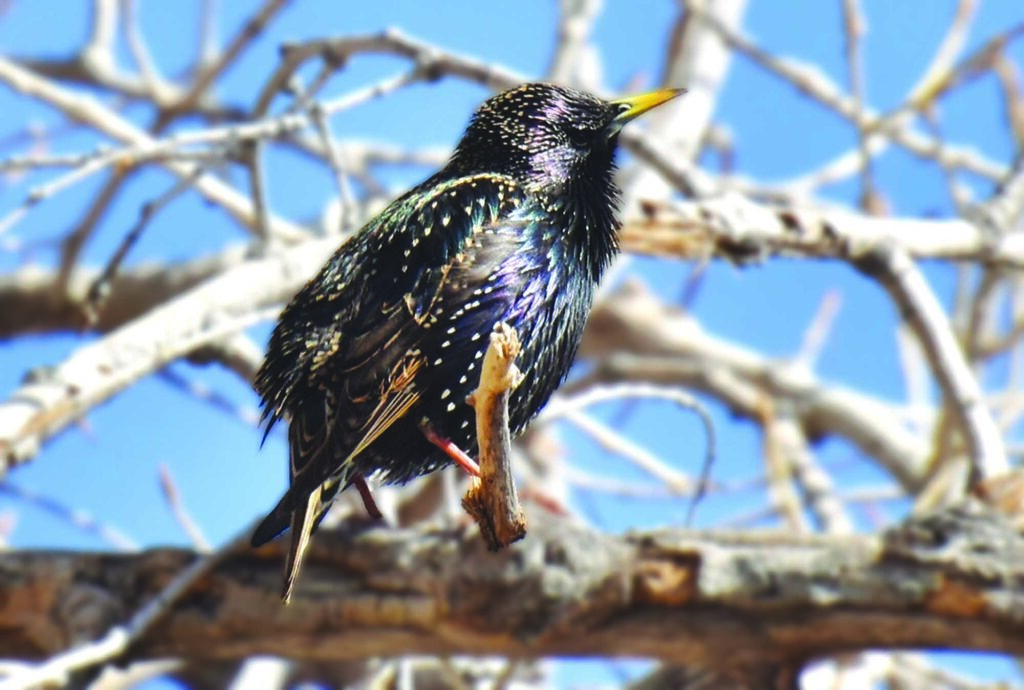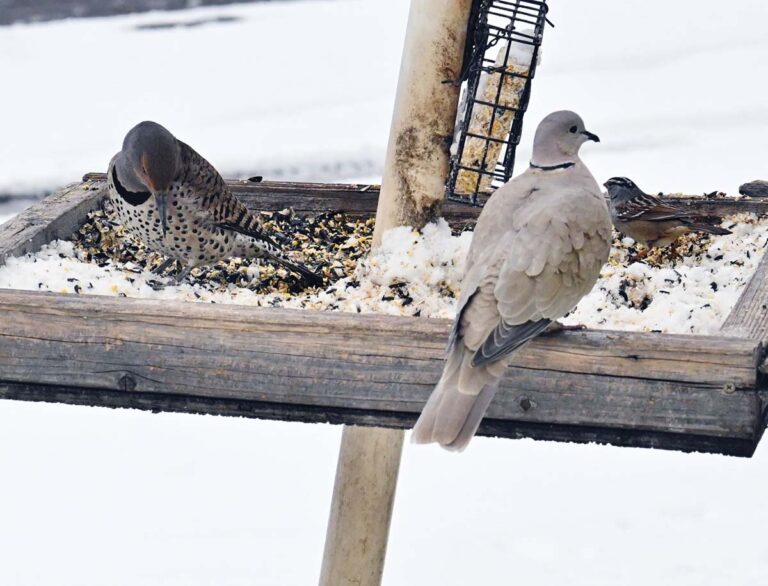Hello, and happy February nature lovers. Ken Hall aka Bird Nut here.
I just finished a fascinating, well written book called Mozart’s Starling, writteBy Lyanda Lynn Haupt. It brought me back to a frequently seen bird, and considered the villain of the bird world. The European Starling. There is no middle ground with these birds. Folks either loathe them or love them. I am one of the latter.
In 1891, 100 starlings were released in New Yorks Central Park, brought here from Europe. Eugene Scheiffelin desired to introduce all birds ever mentioned in the works of William Shakespeare. They quickly spread across the country. Now numbering over 200 million, members of the Mynah family are masters of mimicry, and likely the most capable animal mimics on Earth.
Now to reference back to Mozart’s Starling. In Vienna, April 1784, Mozart had just completed Piano Concerto No. 17 in G. Planning to make it public a short time later. On May 27, Mozart, having yet to perform his new concerto, walked down the city street and heard a song, a very familiar song, coming from a bird at a pet shop. He hurried through the shop door, to be greeted by a beautiful Starling singing his concerto. Fascinating considering it had yet to be played in public. And the accuracy was astounding as well. Mozart quickly wrote down the little birds notes. Needless to say, Mozart being a lover of nature and absolutely fascinated by the Starlings brilliance, adopted this little Starling.
Much is written about the time Mozart spent with his little best friend. And numerous theories revolve around how this bird learned and could recite Mozart’s concerto. As was common for the times, songbirds were most popular in homes throughout Europe. Pet owners would pay nest raiders to capture nestlings just prior to fledging, or leaving the nest. The strongest theory about how the Starling learned his concerto is because Mozart lived near the pet store, the young bird would hear him playing his masterpiece from the nest, through open windows.
Starlings can copy nearly any sound from the environment that pleases them. Unlike parrots or parakeets that repeat words from repetition, Starlings can repeat sounds or words on a first time basis. If it makes them happy, it will become a song. Over 60 different songs have been recorded from one bird. They are extremely social. Unhappy when alone. And quite demanding when they want attention. They will pickup conversations of people on the street. One was heard saying “Come here honey.” Some Starlings don’t like human voices, but rather external sounds of life. A car horn, a dog barking, sometimes lines or songs from television.
In winter Starlings will form in to massive flocks, thousands of birds, known as murmurations. Typically early morning, and evening, you will see these huge groups in perfect aerial synchrony, much like a small black cloud darting about.
The are predominately bug foragers. But will never pass up a good backyard feeder. In a matter of minutes they can empty my feeders. Running off other small birds looking for a treat. They are mostly cavity nesters. Often returning to the same nest year after year. Some areas of the country have seen declines in several other species of cavity nesters.
The male will build or find the nest site. The typical clutch is 4-7 eggs. And usually two clutches a year. So you can see how the population went from 100 birds to over 200 million in 135 years. So whether you loathe them, or love them, they are truly fascinating birds. About the size of a Robin, they are dark brown, or black, with white tips on the feathers. When the sun hits them they show iridescence of blue, purple, and green. Incredibly beautiful. And quite often they will sing you a beautiful song. Seen frequently along the green belt. Keep looking up.
Hope to meet you on the trail.






